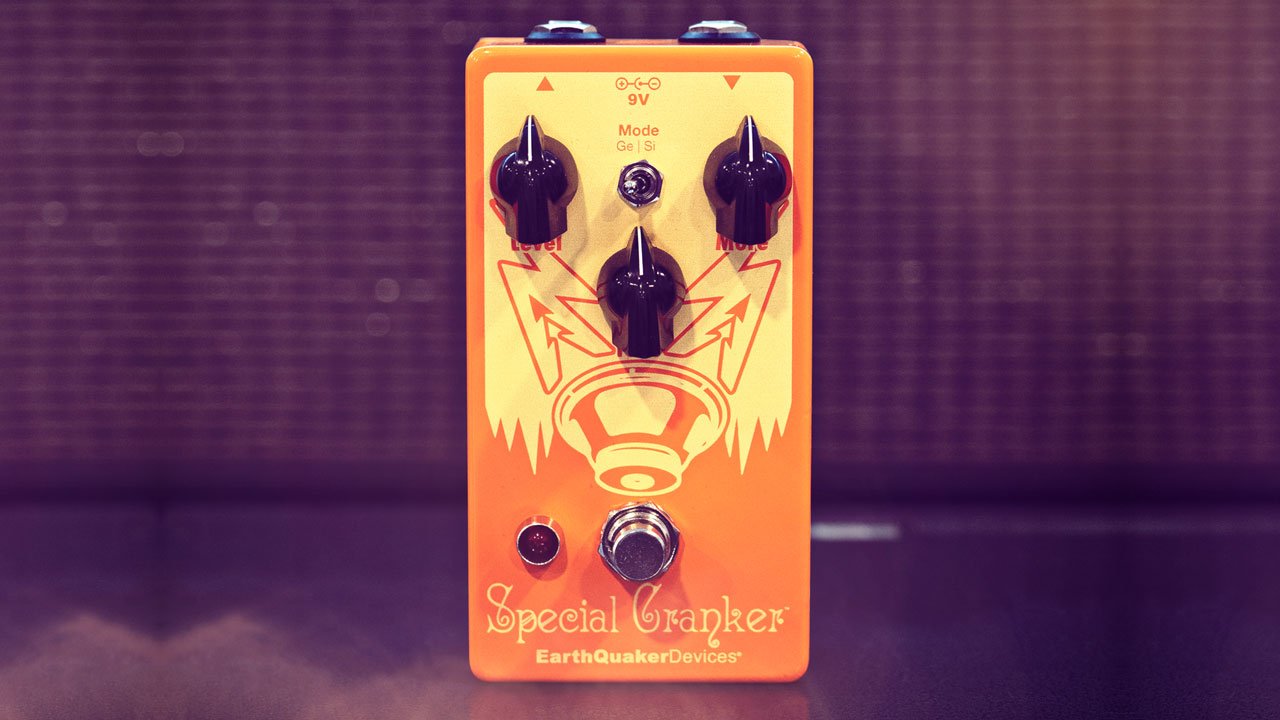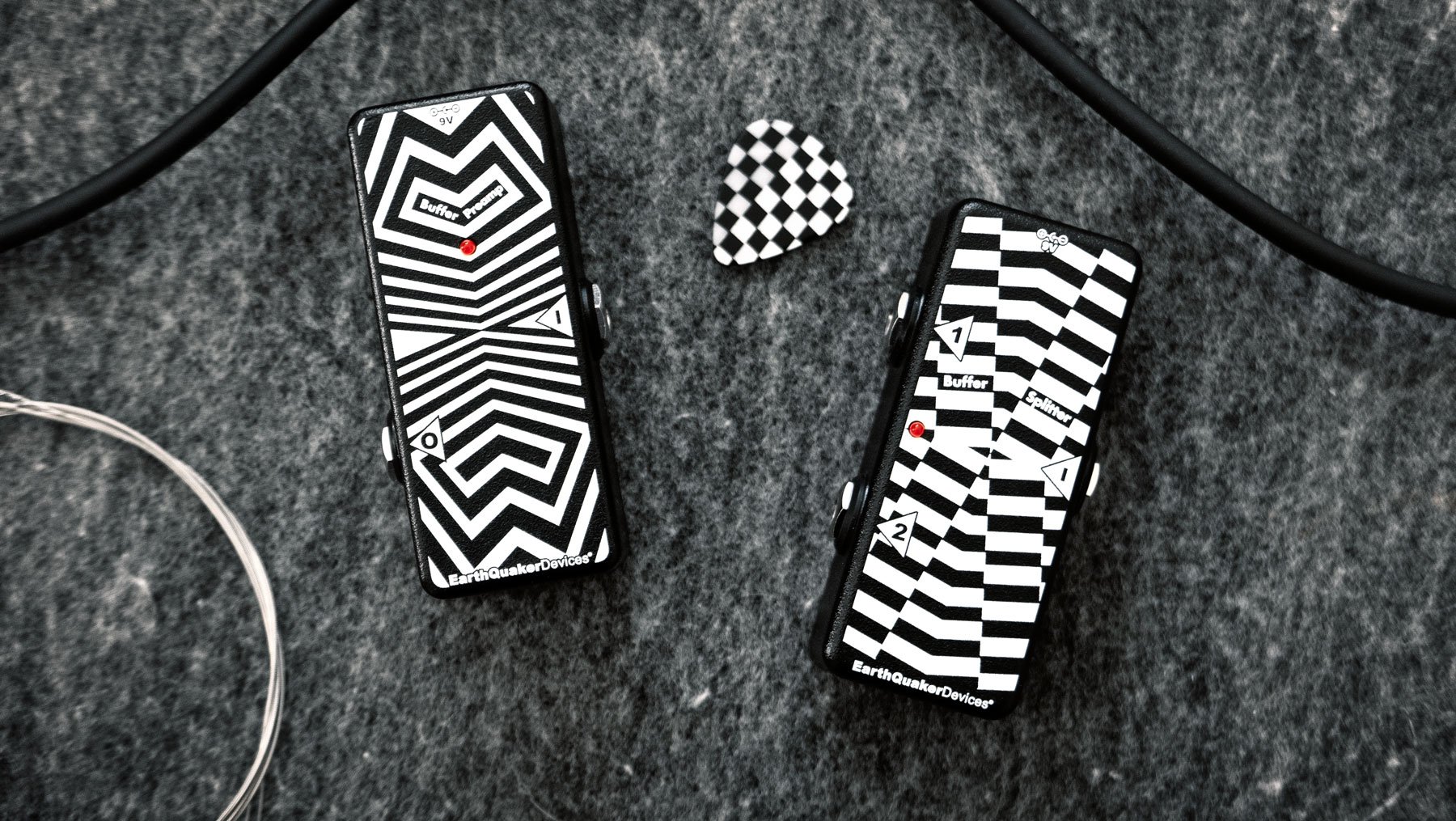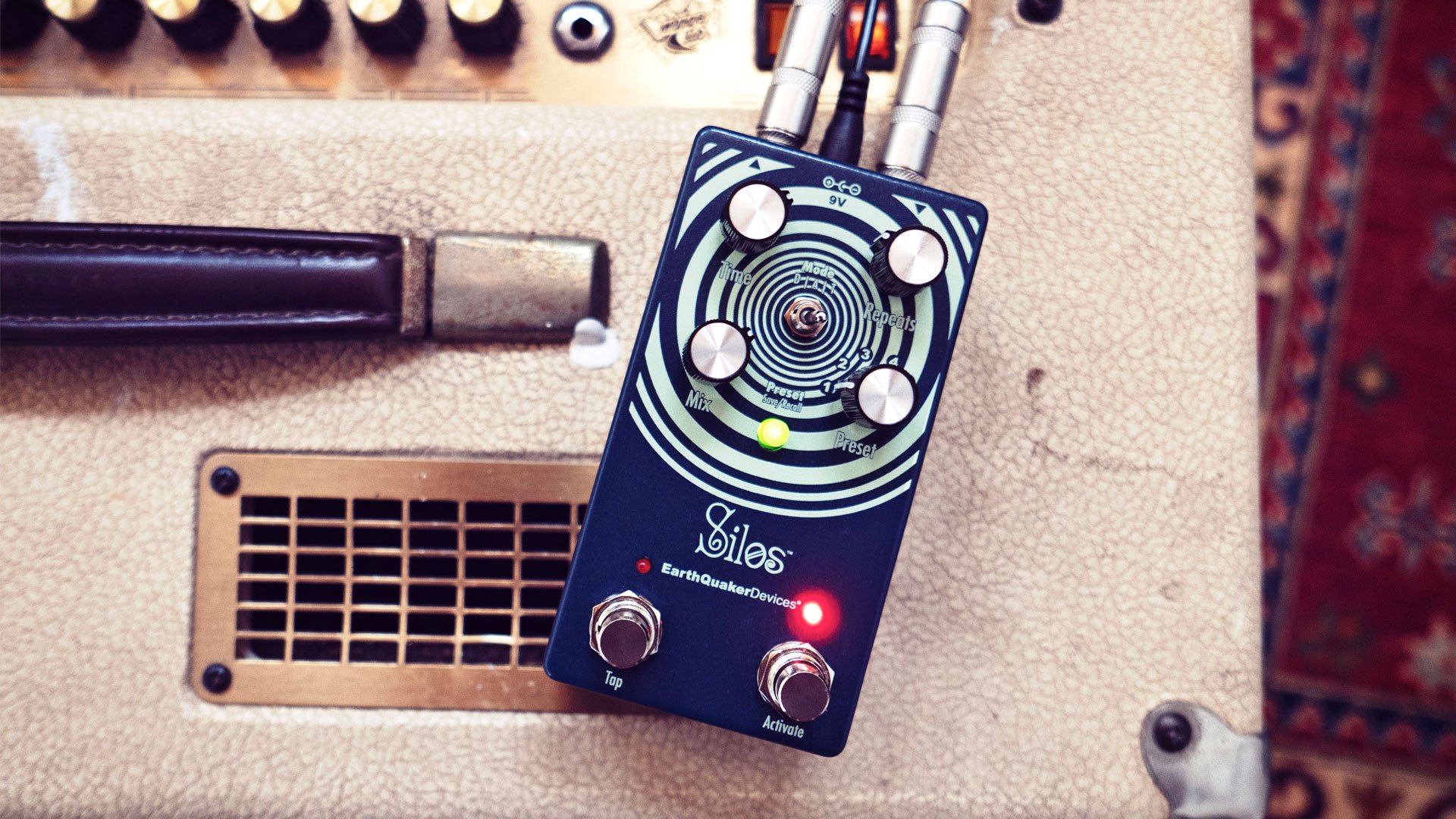Special Cranker For Noodlers
Malcolm X Abram
Hello again to all my fellow bedroom, basement, attic, and back corner of the garage music players! We're back again with another edition of "...for Noodlers." For this edition, we're focusing on EarthQuaker Devices' latest stompbox sensation, the Special Cranker Overdrive!
"Wait, didn't you already make something like that?" some well-versed EQD fans are likely pondering. Yes, we made the dearly departed Speaker Cranker, a one-knob discrete overdrive that gives your dialed-in tone a hint of grit without any signal boost. That legacy pedal has long been a personal favorite of EQD Mastermind Jamie Stillman and clearly inspired the Special Cranker. But the new pedal brings much more to the table and your pedalboard.
Firstly, it has three knobs, Level, More, Tone, and a switch! That's pretty exciting, isn't it? Here's what they all do. The Level lets you boost the signal to almost double when fully cranked with unity in the 10-12 o'clock range. The Tone control is for dialing in the treble response that best suits your needs, with a flat tonal response at around 3 o'clock. The More knob is the only holdover, and just as with its predecessor, it's a gain knob for transforming your signal from nearly clean at minimum to a medium gain overdrive at maximum. The weight and grit level of that overdrive is dependent on the diode switch. Here's where it gets cool. Without getting all science-y, on the left, you get the geranium sound, generally considered more transparent and less harsh as if you were barely pushing a tube amp. On the right side is the silicon diode, which is a brighter, more edgy, and distorted tone.
The Special Cranker joins EQD's other overdrives and distortions, including the Westwood (medium gain, translucent drive with EQ), the very popular Plumes, which, like the Special Cranker, have three knobs, Level, Gain, and Tone, plus a three-way switch for different clipping modes. The big boy Palisades is a deluxe take on the widely beloved Ibanez TS808 with six different clipping voices, five bandwidth settings, and two gain channels. Lastly, the mono-knobbed Acapulco Gold goes from loud distortion to damn loud distortion.
For more information about the full line of EQD Overdrives, check out each pedal's product page and check out the Compendium Distortium blog for a side-by-side comparison of those four pedals. Finally, if you'd like to learn a bit more about the history of overdrive and fuzz pedals, check out our Fuzzcyclopedia blog for some context.
Just as with fuzz, overdrive/distortion is a personal choice. Plenty of gear-loving folks will say that no pedal ever created has accurately emulated the wonderous, life-changing sound of a cranked Marshall or Dumble or a Sunn amplifier head. That may be true, but that's also fine. There are plenty of pedals based on or inspired by the circuitry of those fabled amps, but they also all allow the user to sculpt their dream tone and signature sound without having to blow out the nearby windows of loved ones, neighbors, or your favorite small club if you play gigs. For all us bedroom players and recordists, that's an important aspect.
OK, that's enough proselytizing for stompbox overdrives. Now let's make some noise.
We're going to give you a few audio clips primarily to show the versatility of the Special Cranker. Naturally, it's fantastic on guitar and bass. But hey, why not try it on drums, synths, or electric glockenspiels? Unfortunately, we don't have the latter, so you'll have to settle for guitar, bass, electronic, and acoustic (sampled) drums. The following clips were assembled at the Upstairs Bedroom Sound Lab using a Partscaster equipped with Tonerider P-90s into Mooer Radar Cab sim using its Vox AC15 cab and into the Focusrite 4i4 USB interface and Mixbus 7 32C by Harrison Console.
Clip 1: Here's a simple four-bar chord progression repeated a few times. We'll begin with the Level and Tone knobs at noon and the diode switch in the "softer" germanium position. Next, we'll be taking you through the full range of the More knob beginning at zero, hitting noon at about bar eight, and then fully cranked by the end of bar 12.
Clip 2: It's the same chord progression, only we're in the "harder" silicon side. You should be able to notice the signal begins to distort sooner and eventually gets that rough and more "modern" edge on the barre chords as we get to the triumphant ending.
Clip 3: For this clip, we move to our Dean Mystery Bass (seriously, no serial number, it's not any legacy page on Dean's website or anywhere else. It's just old). We're using the same progression with the diode switch on geranium and the Mooer Radar using a B. SVT (AMPEG SVT 410HE) IR. Again, it's not the best bass, but you can hear how well the Special Cranker keeps the bottom end tight while adding the overdrive.
Clip 4: OK, now let's try some electronic drums. We're going to take this funky loop from Native Instruments Astral Flutter pack for Maschine and kick it up a notch. We'll start dry with a touch of extra bass and mids from the Tone Job EQ and Boost to put some extra boom in our bap. We have the Level knob just past noon, the More knob at about 3 o'clock, and the Tone at around 9 o'clock, and when we kick on the Special Cranker in silicon mode, you'll notice that the deep booming kick becomes more of a tone and those clean hi-hats get glitchy for a very cool electronic and funky drum sound.
Clip 5: Next up, we'll try some "acoustic" drums. Unfortunately, there's no room in the UBSL for an actual drum kit, so these expertly recorded acoustic drum samples come courtesy of Native Instruments' Abbey Road 70's Drummer. We'll begin dry, kick the Special Cranker on around bar 4, with the Level at noon and the Tone at about 2 o'clock and then sweep through the More knob so you can hear how it distorts the transients and the hats for an edgy bit of that huge, old-school John Bonham "When the Levee Breaks" sound.
Clip 6: Last but not least, let's just go a little crazy. Sure, overdrives are great on guitars, bass, synths, and drums but now, let's get weird. We're going back to Native Instruments for their Mallet Flux percussion virtual instrument. We have a series of arpeggiated chords "played" by a virtual percussion group of vibraphone, reverse marimba, a second vibraphone, and a marimba. We've set the Speaker Cranker to silicon with the Level knob just past noon, the More knob at about 11 o'clock, and the Tone at noon. Additionally, we've added a few other EQD treats. So, the signal chain is The Warden optical compressor into the Speaker Cranker into the Tone Job, then into the Rainbow Machine, the Organizer, and finally the Afterneath. We'll start out dry and then kick the pedals in all at once. Enjoy!
Alright! Hopefully, this little aural display has shown you that you get two pretty different styles of overdrive in one attractive enclosure with the Special Cranker. That's more overdriven bangs for your 99 bucks!
Malcolm X Abram is a recovering reporter and music writer and a proud 40 year guitar noodler. He lives, works and plays in the bucolic dreamland of Akron, Ohio in an old house with two dogs who don’t really like each other and way too many spiders.







